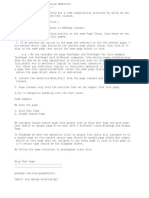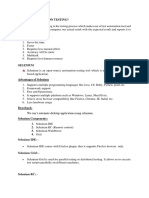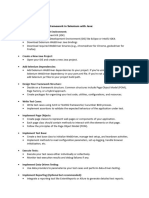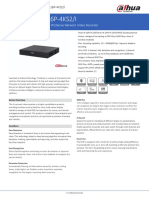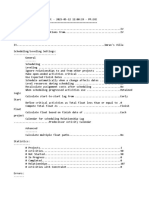0% found this document useful (0 votes)
11 views1 pageImport Java
The Page Object Model (POM) is a design pattern that organizes web UI elements into separate classes for improved maintainability, code reusability, and better readability in test scripts. Each class corresponds to a web page and contains methods for interacting with the page's elements, allowing for easier updates and reduced code duplication. Implementing POM in Selenium involves creating page classes, defining web elements, and using these classes in test scripts to perform actions.
Uploaded by
pullaguranaresh523Copyright
© © All Rights Reserved
We take content rights seriously. If you suspect this is your content, claim it here.
Available Formats
Download as PDF, TXT or read online on Scribd
0% found this document useful (0 votes)
11 views1 pageImport Java
The Page Object Model (POM) is a design pattern that organizes web UI elements into separate classes for improved maintainability, code reusability, and better readability in test scripts. Each class corresponds to a web page and contains methods for interacting with the page's elements, allowing for easier updates and reduced code duplication. Implementing POM in Selenium involves creating page classes, defining web elements, and using these classes in test scripts to perform actions.
Uploaded by
pullaguranaresh523Copyright
© © All Rights Reserved
We take content rights seriously. If you suspect this is your content, claim it here.
Available Formats
Download as PDF, TXT or read online on Scribd
/ 1





















